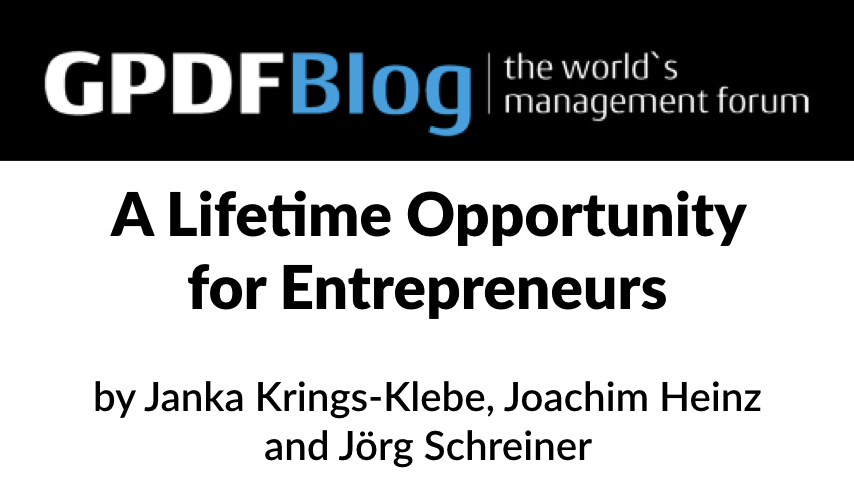Herd-like Behavior Breaks Banks, Not Tech
In a spectacular display of herd-like behavior, the banking sector is rushing into a technological arms race, with the exception of one remarkable company. Unlike others, this bank does not believe that closing technological gaps or possessing superior technology will give them the necessary competitive edge to survive in an increasingly digital world. It learned one lesson more than their peers from the example of tech-driven digital disruptors like AirBnB, Uber, Amazon and Apple. What most other banks learned is that digital technology can raise their efficiency, and contribute to defend against future threats.
Tech sure is important for the future of banks, but it might not be the most important factor deciding about survival in the long term. The real threat for banks would be to loose their dominant position as intermediary of financial transactions. Judging by their actions, the majority of banks are either unaware of this threat, or they have no clear idea how to deal with it. So they play it safe, or at least they think so. If other banks invest into technological capabilities, then they do, too. Playing the game in the same way at least keeps them in the game. Each nervously eyeing their peers, and imitating each others moves, they focus on an age-old survival strategy: In a herd, the strongest ones can save themselves, while the weakest ones are most likely to fall prey to predators.
Becoming the strongest among peers seems the best bet for survival. In the case of banking, it is not. If banks can not defend their strategic position as intermediary of financial transactions, then they all will disappear sooner or later.
Think Like a Predator, Not Like Prey
Except for banks like Monzo, who know how to make themselves irreplaceable. London-based bank Monzo focuses on creating new value propositions for customers. And judging by their numbers, quite successfully. In march 2016, Monzo’s crowdfunding campaign raised one million pounds in record-breaking 96 seconds. One year later, their next campaign raised another 2.5 million pounds from loyal followers. VC investors start lining up with money bags, similar to ten thousands of Monzo’s clients to get a piece of the company: A prepaid debit card, coupled with a smartphone app. Wait a minute; clients queuing up for old-fashioned technology like this? It appears to be ludicrous. Other banks and fintechs have been aggressively marketing similar, more feature-packing mobile apps and multi-channel services for more than five years. Yet within merely 1.5 years, Monzo has succeeded to grow a significantly larger fan base than comparable fintechs: More than 400.000 clients.
Monzo knows how to create customers. They focus on solving their problems. Customers don’t need shiny, elaborately complex technological products if these don’t solve any of their problems. For example, what kind of customer problem do all the banking-led blockchain start-ups solve? Or self-service portals that place the main burden of interaction on their users? In short: None. Monzo, on the other hand, continues to grow because they make dealing with financial aspects of life much easier for their clients. And that is how they defend their position as intermediary for financial transactions: Their clients want Monzo to be in this role.
For example, many of Monzo’s current clients are young adults with limited financial budgets. For them, maintaining control of their spendings is a real issue. Delays of several days until purchases appear in their bank account statements make them nervous. They need fast confirmation that their account still is balanced, before daring to continue their shopping spree. Monzo’s card is widely popular for these young adults because it gives them immediate financial control about their budgets: The smartphone app registers and shows every transaction done through the Monzo card within minutes, together with the current balance. In addition, the app automatically categorizes purchases and allows users to put monthly limits on each category, thereby warning users from overspending for non-essentials, e.g. drinks or shopping.
Customer Journeys Start in Life, Not in Business
For most banks, customer journeys usually start when their clients want to transfer money. For Monzo, they already start when their clients’ needs are likely to involve financial transactions. And aren’t there a lot of financial transactions in our lives? How about playing intermediary for most or even all of them? This is the opportunity that I see Monzo preparing to grab. It explains how the company might be able to obtain one billion customers five years from now — you read correctly; one billion, not one million! — as recently claimed by their CEO Tom Blomfield. Debit cards are just Monzo’s entry point into a much larger market. Much larger than traditional banking.
Monzo already announced how they aim to incorporate their app into many more customer journeys. For example, they want to offer services to switch their clients to less costly providers of gas or electricity automatically, thereby reducing monthly bills. Similarly, they plan smart software to auto-switch their clients’ saving accounts to providers offering higher interest rates. Open banking regulations like PSD2 make it possible to easily integrate services from many other industries into financial customer journeys. Monzo’s CEO even talked about making their clients aware of the best deals for shopping grocery. I imagine the list of announcements could easily extend to the integration of services from insurance or mobility providers. From the perspective of these industries, it would mean that Monzo would become the new go-to platform to easily acquire new customers. It would turn Monzo from a bank to a business intermediary for many types of professional services.
Dumb Use of Smart Technology Won’t Save You
The banking sector is one, but by far not the only industry that has fallen into a common trap of digital technology. Obsession with much-hyped, technologically challenging end products is currently blinding entire industries to the more immediate strategic threats and opportunities in the digital age: To smartly and swiftly combine proven technology with new services into irresistible value for customers.
Discover how to set up your own business operations for new thinking and innovation across markets.
Learn the secrets of FUTURE LEGENDS – Business in Hyper-Dynamic Markets, praised by business leaders:
“This must-read equips leaders with game-changing knowledge and conceptual approaches for the future of business.”
“The book does not just add to the number of publications arguing businesses must become radically more adaptable and innovative than they are today. It is also a “how to” guidebook on making those changes – and the best one I have read to date.“
Blog image: www.pexels.com











